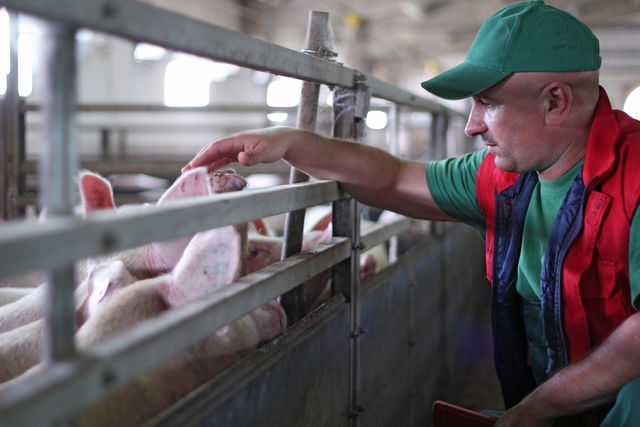H1N1 is a respiratory infection caused by the Influenza A virus. It was first identified in pigs, which is why it is also referred to as the swine flu, but later infected humans too. This virus can be easily transmitted through saliva droplets and respiratory secretions, which remain suspended in the air after a person sneezes or coughs.
Symptoms usually appear three to five days after coming in contact with the virus and they are very similar to flu. Common symptoms include fever, chills, fatigue and headaches. In some cases, however, more serious complications may arise, like difficulty breathing, which may lead to hospitalization.

Main symptoms
The main signs and symptoms of swine flu appear three to five days after contact with the virus, and they include:
- Fever;
- Chills;
- General fatigue;
- Headaches;
- Loss of appetite;
- Persistent cough;
- Stuffy nose;
- Nausea and vomiting;
- Diarrhea.
In some cases, people infected with swine flu may develop serious breathing complications, which can lead to respiratory failure. When this happens, the use of ventilators may be required.
How transmission occurs
Swine flu transmission happens through saliva droplets and lung secretions that remain suspended in the air when an infected person coughs or sneezes. In addition, the virus can remain on surfaces for up to eight hours, and so it is also possible for the infection to be transmitted through contaminated surfaces.
H1N1 may also be transmitted through direct contact with infected pigs. Therefore, it is recommended to cook pork very well at high temperatures in order to kill the virus through heat.
Treatment options
If you notice any sign or symptoms of a swine flu infection, it's important to put a face mask on and go to a clinic or hospital for diagnosis. Usually, affected patients are placed in isolation to avoid transmitting the virus. Treatment includes rest, increased fluid intake, and antiviral medication.
In more serious cases, mechanical ventilation may also be necessary to avoid respiratory failure. In those cases, the person may also need antibiotics to prevent secondary bacterial infections.
It is also important to adopt prevention measures to help contain the infection during treatment. You should avoid sharing personal objects with others; avoid closed, crowded spaces with poor ventilation; cover your nose and mouth when coughing; and wash your hands regularly.
